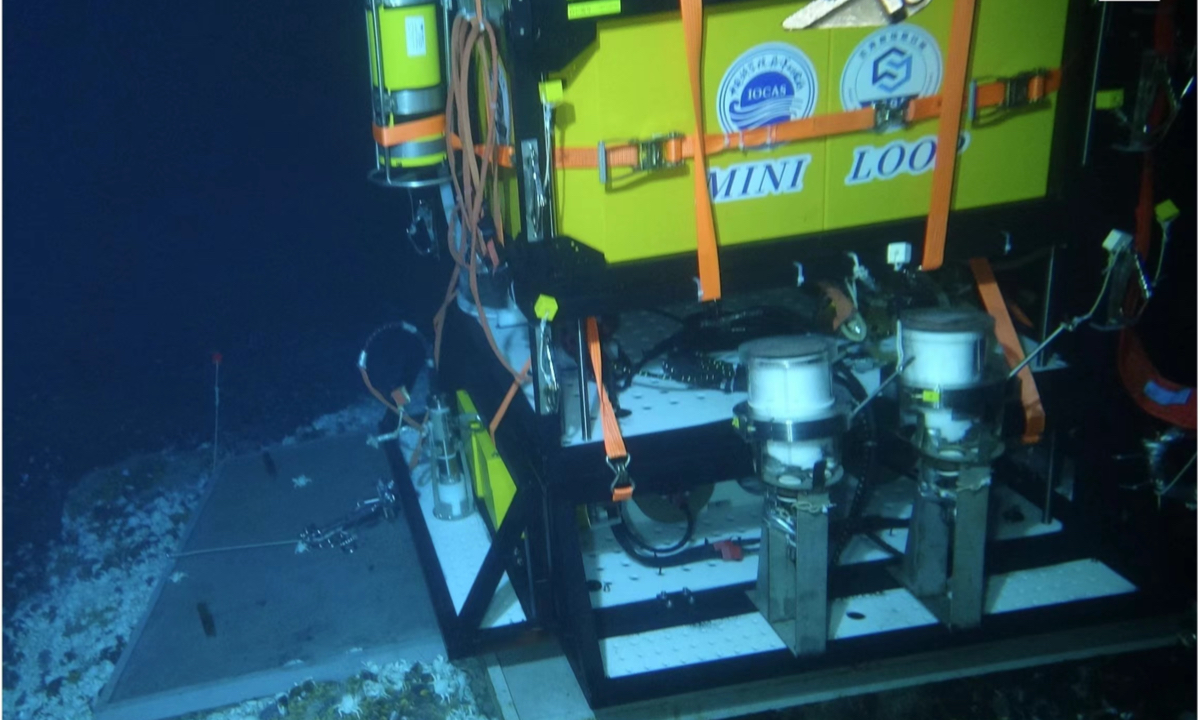Chinese scientists develop long-term ocean observation platform for deep-sea marine ecology research
GLOBAL TIMES
Yu Xi 17:09 Mar 27 2023

The lander-based deep-sea multi-channel Raman spectroscopy system conducts operation in the deep-sea cold seep. Photo: Courtesy of Institute of Oceanology, Chinese Academy of Sciences
Chinese scientists have deployed a long-term ocean observation platform in cold seep areas of the South China Sea, with continuous video and data acquired, the project leader told the Global Times on Monday. The platform could be used for the study of deep-sea marine ecology, global climate change, origin of life and other sectors.
The platform was developed by the Qingdao-based Institute of Oceanology under the Chinese Academy of Sciences (CAS) in East China's Shandong Province, which is the first ocean research institute in China. The research results have been published in the leading scientific journal Deep-Sea Research Part I in March.
Zhang Xin, the project leader and also a professor at the institute, told the Global Times that the in-situ long-term observation data acquired by the platform can assist researchers study the evolution of chemosynthetic communities and environmental changes near fluid seepages in the deep sea.
It usually takes long time to observe the change and evolution of biological community and the interaction with the surrounding environment in the deep-sea hydrothermal vents and cold seep areas. However, underwater vehicles, such as manned submersibles and remotely operated vehicles, have great restrictions in terms of time, which can't meet the demand of long-term observation, Zhang said.
The long-term ocean observation platform can use a new controllable model for launching and recovery with the aid of a research vessel and other submarine vehicles, noted Zhang.
Zhang said that a free-fall mode lander can't be adjusted in real time as there is no means of communication if the lander separates from a research vessel. The long-term ocean observation platform can be operated in an online real-time control mode, which can select landing site and adjust the observation parameters during the launching.
Since 2016, the multi-generation deep-sea long-term observation system has been placed in deep-sea cold seep areas of the South China Sea for many times. So far, the system has been placed in deep sea for an accumulative of 1,070 days, according to its developer.
China has proposed the use of an in-situ scientific experiment station in recent years, which takes a deep-sea base station as the center, carrying unmanned submersibles, labs and other platforms to conduct in-situ experiments and exploration, according to the CAS.